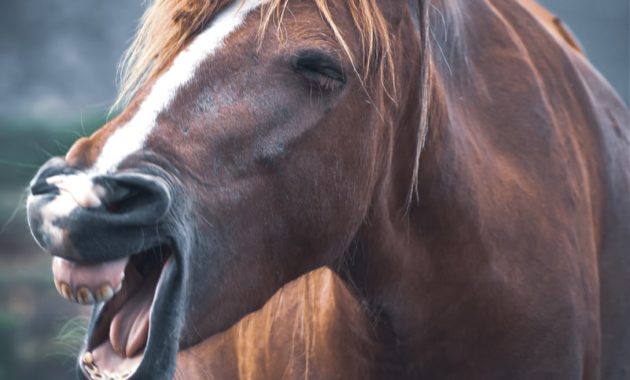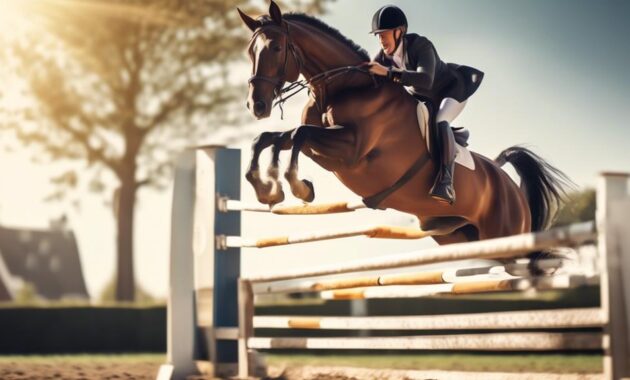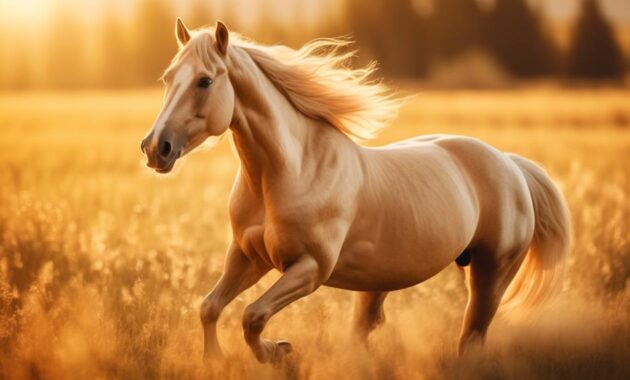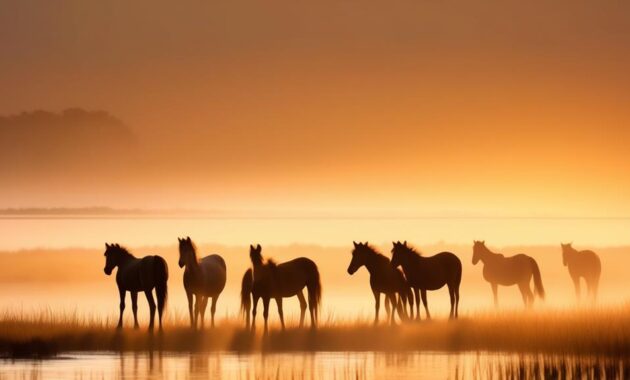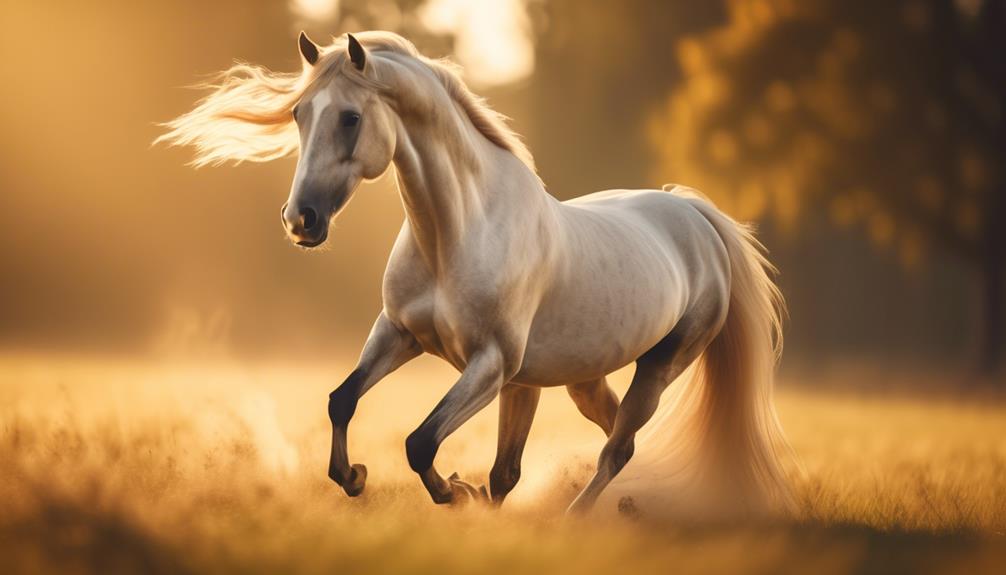
So, you think you know all there is to know about horse breeds? Well, prepare to be pleasantly surprised by the Boulonnais.
This esteemed breed boasts a lineage that can be traced back to Julius Caesar’s cavalry, a fact that may raise an eyebrow or two. But trust me, there’s more to this rare and majestic horse than meets the eye.
From its impressive physical stature to its captivating temperament, the Boulonnais has a story that’s worth exploring. But I won’t spoil it all for you just yet. Let’s just say, you won’t be disappointed.
Key Takeaways
- The Boulonnais horse breed is known for its large, powerful, and elegant physique, standing at 16 hands and weighing around 1,320 pounds.
- The breed has a rich history, dating back to Julius Caesar’s cavalry, and has been crossbred with Andalusian, Arabian, and Spanish Barb horses to enhance its characteristics and abilities.
- Despite almost going extinct after World War II, dedicated breeders and enthusiasts have successfully revived the Boulonnais breed, preserving its bloodlines and promoting its versatility and gentle temperament.
- The Boulonnais horse breed showcases impressive traits such as strength, beauty, grace, stamina, and adaptability, making it suitable for various equestrian disciplines and work settings.
Physical Characteristics
The Boulonnais horse breed is known for its large, powerful, and elegant physique. Standing at 16 hands and weighing around 1,320 pounds, these majestic creatures are truly a sight to behold. With a lifespan of approximately 30 years, they come in various colors, including gray (the most common), black, and chestnut.
Originating from the Boulogne District in France, the Boulonnais can be traced back to Julius Caesar’s cavalry. Over the years, they were bred with Andalusian, Arabian, and Spanish Barb horses, resulting in different types such as Petit Boulonnais, Picard, Cauchoix, and Grand Boulonnais. Despite almost going extinct after World War II, these horses have made a remarkable comeback.
Their temperament is active, energetic, social, easygoing, and gentle, making them suitable for all levels of horse owners and riders. Known for their willingness and docile personality, they’re great companions.
In terms of appearance, they’ve a distinctive head with a wide forehead and small erect ears, a muscular and arched neck, a wide chest with prominent withers, a muscular shoulder with more slope than other draft horses, a straight back, and solid, strong legs with clean joints.
Grooming requirements include regular brushing with various tools, bathing when necessary, paying special attention to the mane and tail, and cleaning the hooves.
Breed History
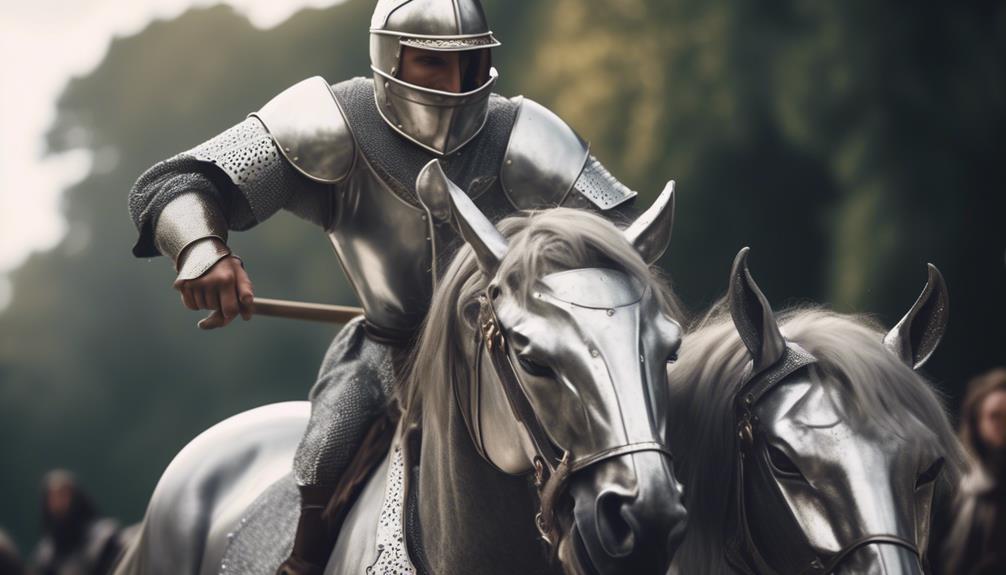
Tracing its roots back to the Boulogne District in France, the Boulonnais horse breed has a rich and storied history. This majestic breed can evoke a sense of awe and wonder, as you learn about its fascinating journey through time.
Here are three remarkable highlights:
- Julius Caesar’s cavalry: The Boulonnais breed can be traced back to this legendary era, where they served alongside the renowned Roman general. Imagine the power and grace of these horses charging into battle.
- Crossbreeding with Andalusian, Arabian, and Spanish Barb horses: This infusion of bloodlines added elegance, agility, and refinement to the Boulonnais breed. Witness the blending of different equine cultures to create a truly exceptional horse.
- Near extinction after World War II: The Boulonnais breed faced a perilous threat to its existence. However, thanks to dedicated breeders and enthusiasts, it was saved from the brink of extinction. Experience the triumph of preservation and the enduring beauty of these remarkable horses.
Temperament and Suitability
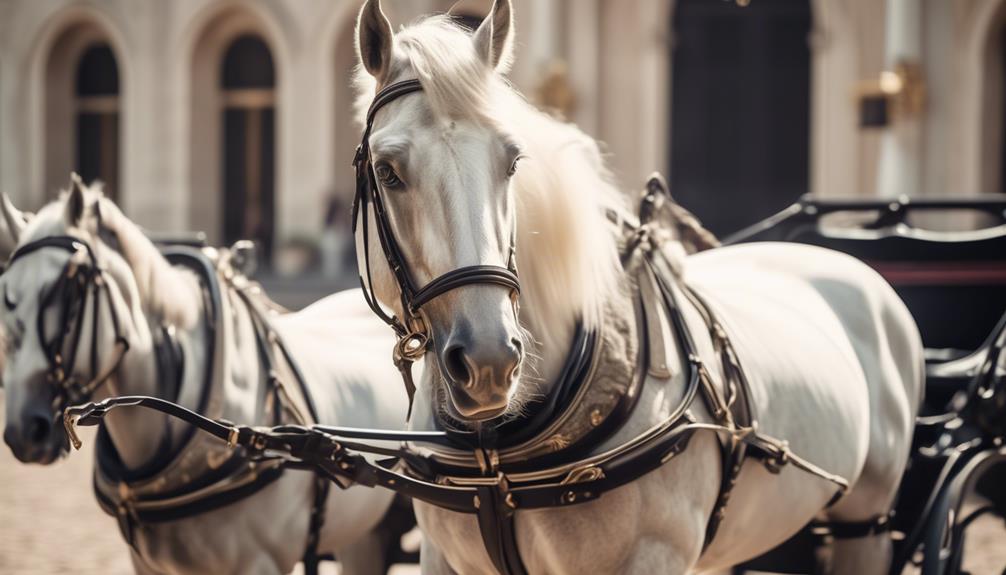
After learning about the fascinating history of the Boulonnais horse breed, let’s now explore their temperament and suitability for various owners and riders. The Boulonnais horses have an active and energetic temperament, making them suitable for all levels of horse owners and riders. They are known for being easy to work with and can perform a range of tasks. Their willing and docile personality makes them great companions. Here is a table summarizing the temperament and suitability of the Boulonnais horse breed:
| Temperament | Suitability |
|---|---|
| Active | All levels |
| Energetic | |
| Social | |
| Easygoing | |
| Gentle |
Appearance
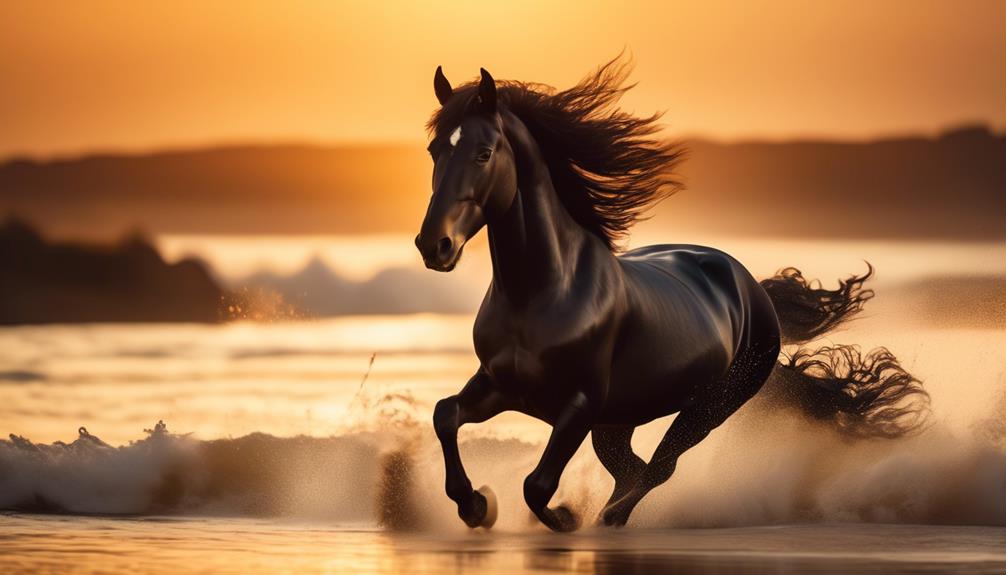
To truly appreciate the Boulonnais horse breed, one must first take note of its distinctive head and muscular physique. The Boulonnais has a wide forehead and small erect ears, which give it a regal and alert appearance. Its muscular and arched neck adds to its majestic presence, while its wide chest and prominent withers exude strength and power.
The Boulonnais also stands out with its muscular shoulder, which has more slope than other draft horses, and its straight back and solid, strong legs with clean joints. When you see a Boulonnais, you can’t help but be captivated by its beauty and grace. Its appearance truly embodies the rarity and majesty of this remarkable horse breed.
Grooming Requirements
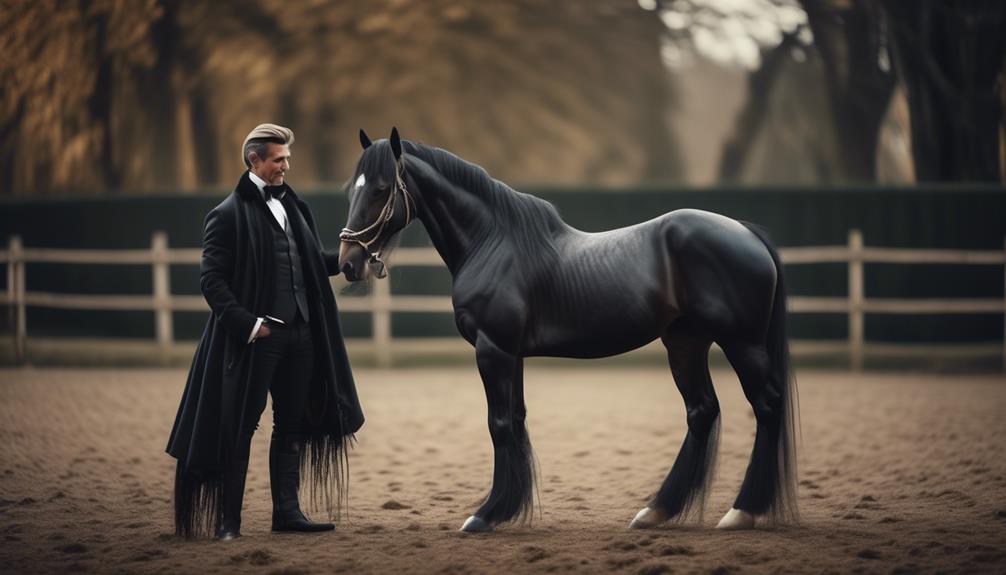
Are you wondering how to properly groom a Boulonnais horse? Grooming is an essential part of caring for your majestic companion.
Regular brushing is important to keep their coat healthy and shiny. Use a curry comb to loosen dirt and debris, followed by a dandy brush to remove loose hair and dirt. A body finishing brush will give their coat a smooth and polished look. Don’t forget to use a shedding blade during shedding season to remove excess hair.
For their mane and tail, use a mane/tail brush to detangle and keep them looking neat. When necessary, give your Boulonnais horse a bath with a gentle equine shampoo. Pay special attention to delicate areas like the eyes and ears, using a moistened soft cloth to clean them.
Lastly, clean their hooves with a hoof pick to remove dirt and debris. By following these grooming requirements, your Boulonnais horse will always look their best.
Height and Weight
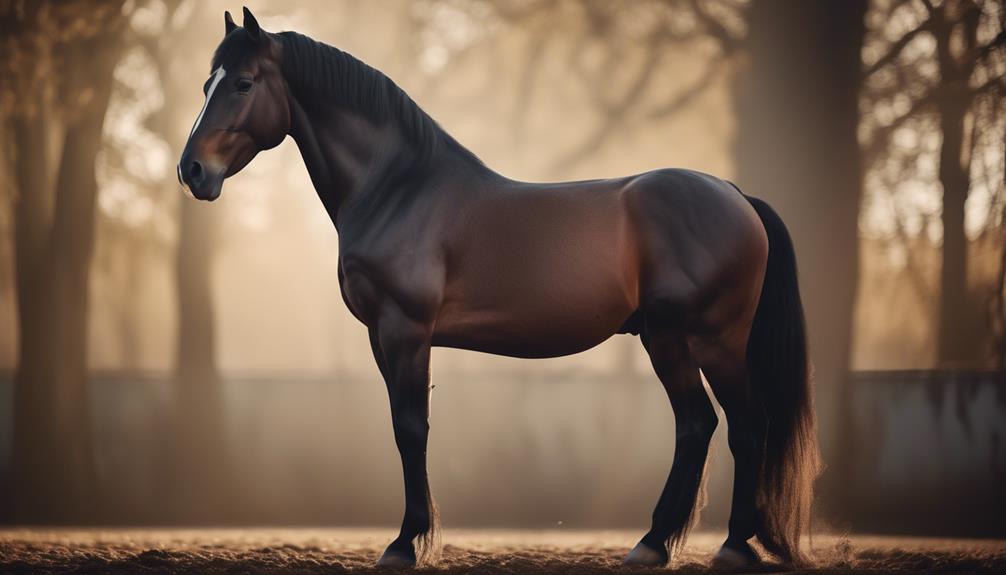
The Boulonnais horse breed boasts an impressive height of 16 hands and a weight of 1,320 lb. Here are three reasons why these numbers make them truly remarkable:
- Towering Presence: Standing at 16 hands, Boulonnais horses command attention and exude a majestic aura. Their tall stature makes them a sight to behold, inspiring awe and admiration.
- Powerful Physique: Weighing in at 1,320 lb, these horses possess incredible strength and muscle mass. Their robust build allows them to effortlessly perform demanding tasks, whether it’s pulling heavy loads or excelling in equestrian competitions.
- Graceful Elegance: Despite their size, Boulonnais horses move with grace and elegance. Their large frames are beautifully proportioned, giving them a regal appearance. Witnessing their fluid movements is a testament to their athletic ability and charisma.
Lifespan and Colors
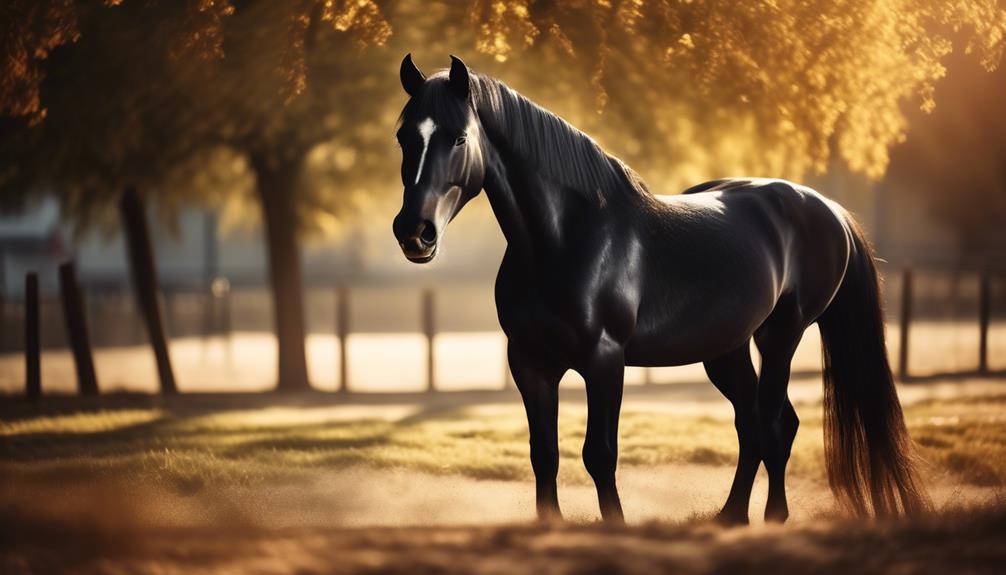
Now let’s explore the fascinating facts about the Boulonnais horse breed’s lifespan and the array of colors they come in.
Boulonnais horses have a lifespan of around 30 years, giving you plenty of time to form a strong bond with these majestic creatures.
When it comes to colors, the most common shade is gray, but you can also find Boulonnais horses in black and chestnut. Each color adds its own unique beauty to these already stunning horses.
Whether you prefer the classic elegance of gray, the boldness of black, or the warmth of chestnut, there’s a Boulonnais horse to suit every taste.
Origin and Tracing Back
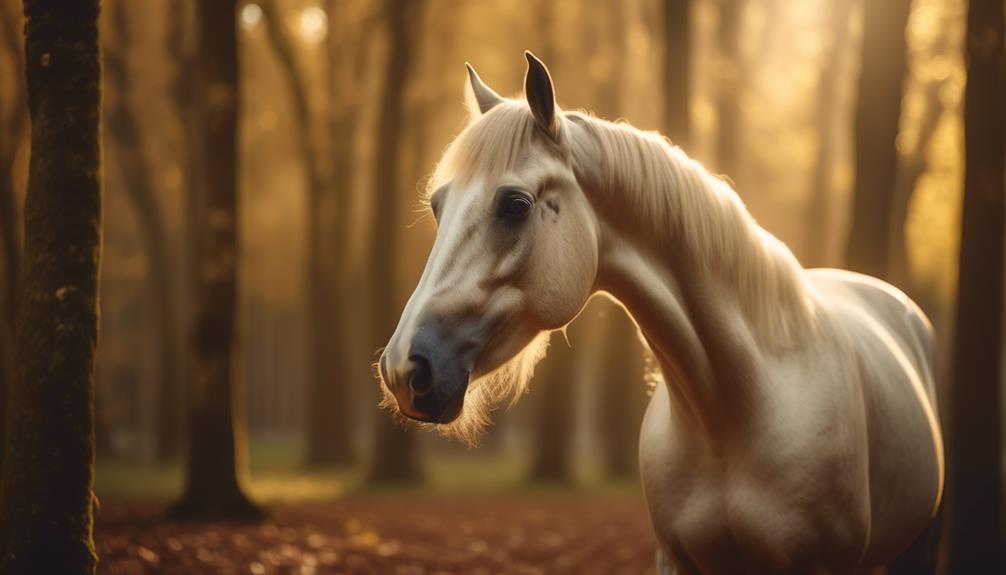
Tracing back to the Boulogne District in France, the origin of the Boulonnais horse breed is rich in history and heritage. Here are three fascinating facts about its origins:
- Julius Caesar’s cavalry: The Boulonnais breed can be traced back to the times of Julius Caesar, where these majestic horses were used in his cavalry. Imagine the strength and power they possessed!
- Influenced by noble bloodlines: To enhance their qualities, the Boulonnais breed was selectively bred with Andalusian, Arabian, and Spanish Barb horses. This infusion of noble bloodlines contributed to their elegance and grace.
- Near extinction: Sadly, after World War II, the Boulonnais breed faced the threat of extinction. However, dedicated breeders and enthusiasts worked tirelessly to preserve this majestic breed, ensuring its survival for future generations.
The origin and history of the Boulonnais horse breed are a testament to its resilience and enduring beauty.
Breeding With Other Horse Types
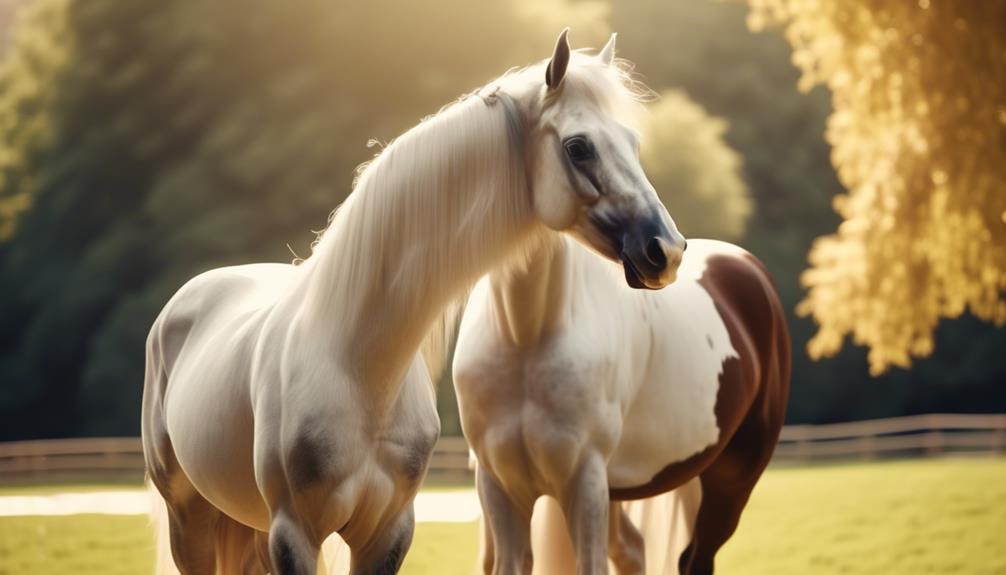
To enhance their qualities, breeders selectively crossed the Boulonnais horse with Andalusian, Arabian, and Spanish Barb horses. By introducing these different bloodlines, breeders aimed to improve the Boulonnais horse’s characteristics and abilities.
The Andalusian horse brought elegance and agility, while the Arabian horse contributed endurance and refinement. The Spanish Barb horse added strength and power to the breed.
These intentional crosses resulted in a horse that maintained the Boulonnais’ large and powerful physique, while also possessing increased grace, stamina, and versatility. The breeding program successfully enhanced the Boulonnais horse’s traits, making it a more well-rounded and adaptable equine companion.
Today, the breed continues to impress with its combination of strength, beauty, and versatility, thanks to the careful selection and blending of these different horse types.
Types of Boulonnais Horses
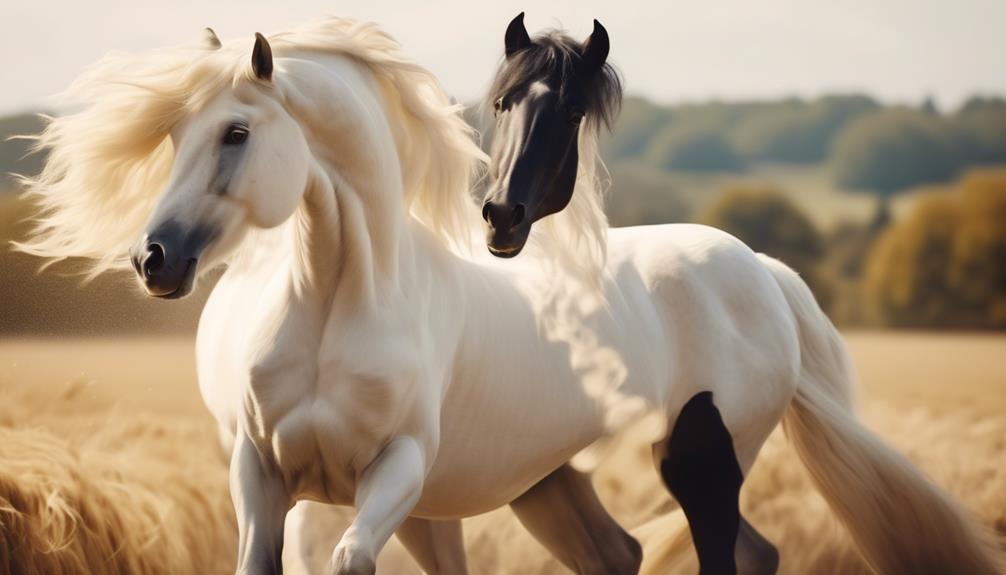
After breeding with Andalusian, Arabian, and Spanish Barb horses to enhance their qualities, the Boulonnais horse has developed different types that showcase a range of characteristics and abilities. These types include:
- Petit Boulonnais: With a height of around 16 hands, this type is known for its elegance and agility. They excel in dressage and show jumping, displaying grace and precision in their movements.
- Picard: Slightly taller and more muscular than the Petit Boulonnais, this type is prized for its strength and endurance. They’re often used for agricultural work, pulling heavy loads with ease.
- Cauchoix: The largest and most powerful type, the Cauchoix is a true powerhouse. With their immense strength, they’re ideal for heavy pulling tasks such as logging or plowing fields.
These distinct types of Boulonnais horses demonstrate the breed’s versatility and adaptability, making them valuable assets in various equestrian disciplines and work settings.
Near Extinction and Revival
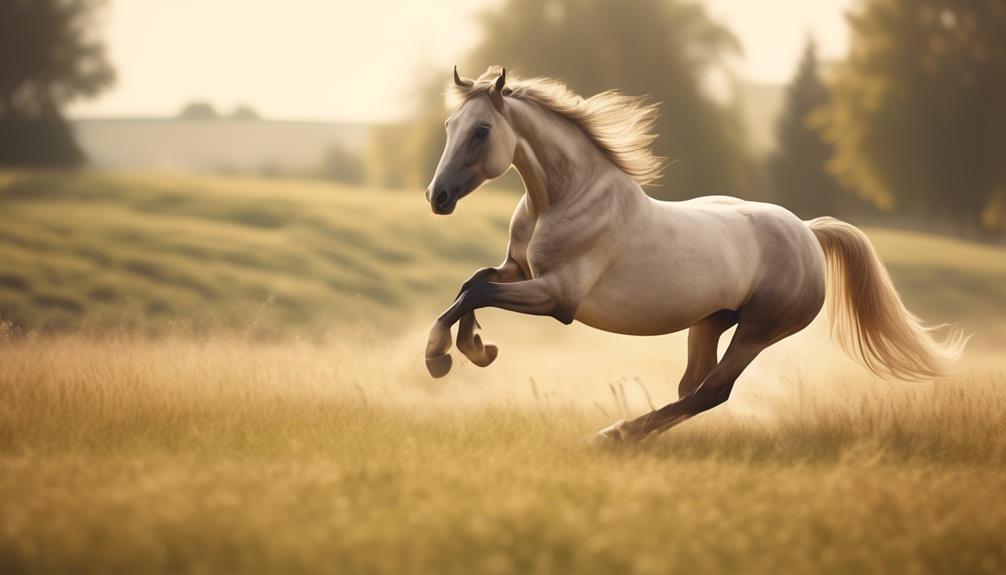
The Boulonnais horse breed teetered on the brink of extinction following the devastation of World War II. The breed, once flourishing in the Boulogne District of France, faced a challenging period as the war took a toll on the horse population. With the destruction of infrastructure, scarcity of resources, and change in agricultural practices, the Boulonnais horses were no longer in demand. Their numbers dwindled, and it seemed like the end was near.
However, thanks to the efforts of dedicated breeders and enthusiasts, a revival began in the 1970s. They worked tirelessly to preserve the breed’s bloodlines and promote their versatility and gentle temperament. Today, although still considered rare, the Boulonnais horse breed has made a remarkable comeback, attracting attention from horse lovers around the world.
Frequently Asked Questions
What Is the Average Cost of Purchasing a Boulonnais Horse?
The average cost of purchasing a Boulonnais horse can vary, depending on factors such as age, training, and bloodlines. It’s best to research local breeders and sellers to get an accurate price range.
Are Boulonnais Horses Prone to Any Specific Health Issues?
Boulonnais horses are generally healthy, but like any breed, they can be prone to certain health issues. Regular vet check-ups, proper nutrition, and good care can help prevent or manage any potential problems.
How Long Does It Take to Train a Boulonnais Horse?
Training a Boulonnais horse typically takes time and patience. With consistent training and positive reinforcement, you can expect to see progress within a few months. Remember to establish trust and build a strong bond with your horse throughout the process.
What Are the Dietary Requirements for a Boulonnais Horse?
To meet a Boulonnais horse’s dietary requirements, provide a balanced diet of good-quality hay or pasture, supplemented with grain, minerals, and vitamins. Consult a veterinarian for specific recommendations based on your horse’s age, weight, and activity level.
Can Boulonnais Horses Be Used for Competitive Sports?
Yes, Boulonnais horses can be used for competitive sports. Their active and energetic temperament, combined with their strength and versatility, make them suitable for a range of disciplines.
How Do Boulonnais Horses Compare to Connemara Ponies in Terms of Versatility and Hardy?
Boulonnais horses are known for their strength and versatility, but connemara ponies, Ireland’s native breed, are equally hardy and adaptable. While Boulonnais horses excel in pulling heavy loads, Connemara ponies are agile and versatile, making them great for various equestrian disciplines. Both breeds are prized for their durability and resilience.
Conclusion
In conclusion, the Boulonnais horse breed is a rare and majestic breed that combines stunning physical characteristics with a rich history.
With its large and powerful physique, gentle temperament, and versatility as both a performer and companion, the Boulonnais truly stands out among horse breeds.
Despite facing near extinction, it has persevered and continues to capture the hearts of horse enthusiasts worldwide.
If you’re looking for a unique and captivating breed, the Boulonnais is definitely one to consider.

